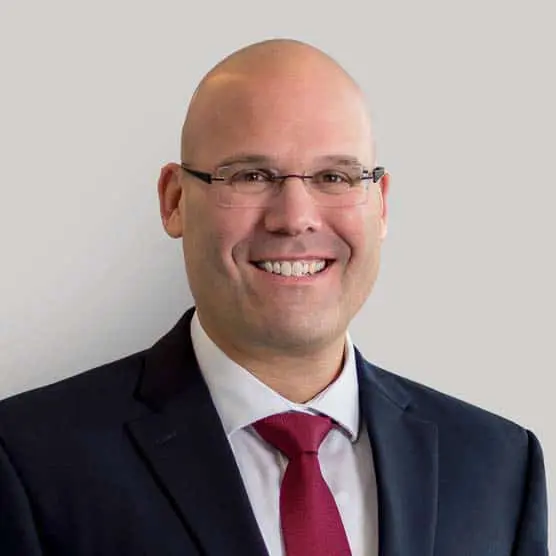After moderating a panel on the challenging debt market conditions at the recently held 2023 NIC Fall Conference, I can confidently say that we’re all ready for a change in forecast.
In a panel discussion with industry experts Brian Heagler, SVP and senior banker at KeyBank; Robb Chapin, CEO of Bridge Investment Group; David Young, managing director at Locust Point Capital Inc.; and Lori Coombs, managing director with Wells Fargo, we detailed the impact of higher interest rates and tightening credit, the dichotomy of improved operations and stalled lending, the growing gap between bid and ask prices, and additional timely topics in an informative hour.
Industry Outlook
The session began with a 10,000-foot view of the industry. To no one’s surprise, panelists painted a dim picture of the current state of the capital and debt markets. Putting some numbers behind the pain industry participants have been experiencing, Real Capital Analytics deal volume in the U.S. and Europe is down 60% in 2023, mergers and acquisitions (M&A) volume is down 75% according to Levin Associates data, and commercial mortgage-backed security (CMBS) volume is down 70%, according to a session at another recent industry conference one of our panelist’s attended. Clearly deal activity has slowed and the gap between bid and ask prices has widened in recent months.
We all agreed that from a debt perspective, it is a daunting time. Using a climate metaphor, one could say the seniors housing and care industry has been enduring storm after storm the past few years. First it was hit by hurricane COVID, then after a slight recovery it was hit by hurricane inflation and simultaneously labor, then the debt market hurricane landed most recently. That is a lot of stormy weather to endure in a relatively short time. Surely panelists have been battered down by this to the point of hopeless resignation, right?
Nope. To my delight, my fellow debt market panelists as well as the rest of the conference-goers exuded a sense of optimism and a conviction to advance our industry that left me hopeful, despite the pain of the moment. I would echo a sentiment shared by other panelists, that Fall NIC was a time to feel encouraged about the future, and that we will get through this tough period together and enjoy a bright future due to the conviction we share as an industry.
Interest Rates Are What They Are
After 15 years of historically low interest rates hovering below 2%, we are all still adjusting to the new reality of rates at or above 5%. The consensus seems to be that we will have high rates for longer, which is simply something we must accept. We are undergoing a rate reset, if you will, and that means we must rethink underwriting, returns, and other elements of a transaction.
It is important to remember that there was a time not so long ago when federal funds and Treasury rates were well above 5% and that felt normal. It feels abnormal now because of recent history, but all of us on the panel agreed that we can adjust accordingly if we have certainty that rates will not fluctuate dramatically day to day and hour to hour. The last couple years have seen so much volatility with the Treasury swinging wildly day to day and even hour to hour, and that uncertainty is more detrimental to deals than higher rates. With more stabilization and certainty that rates won’t spike, we can move forward with an understanding that rates are no longer at all-time lows but are still relatively attractive by historical standards. As such, we agree that when a borrower can rate lock a transaction, they should execute, and waiting for a slightly better deal is not a prudent strategy.
Investors Wait and See
Understandably, investors are largely adopting a wait-and-see approach when it comes to the seniors housing and healthcare industry. Labor-intensive operating businesses like seniors and hospitality are under more scrutiny and face more headwinds than some other asset classes. Investors have a lot of options today, and “hot” segments like logistics and industrial are getting more attention than senior living—at least at the moment.
The outlook, however, tells a different story, as the theme of brighter days ahead once again prevails. Savvy investors are keeping a close eye on the industry, and they are encouraged by signs of positive operational performance they are seeing at communities throughout their portfolios. The enhanced focus on operations in the wake of COVID is making for stronger businesses and that is not going unnoticed by investors.
The brokerage community, it was noted, views current conditions with enthusiasm and believes this is a good time to buy assets. The issue, of course, is getting the deal financed with rates where they are.
Yes, this moment in history is painful. Rates are higher than we’d like and circumstances out of our control are hindering growth plans. Despite all of that, however, the industry’s story is strong when you put it all together, our panelists agreed. And the expectation is that investor sentiment will fully rebound over the next 18 to 24 months, with attractive opportunities for proven operators.
Credit and Underwriting
The emphasis on the operator and improving performance is at the forefront when it comes to the perspectives of credit and underwriting in the current environment. A sponsor with the ability to bring extra capital if needed can be beneficial, panelists noted. Turnaround assets, a long-time favorite of investors, are difficult to finance in this market because there is a heightened focus on underwriting in-place cash flow. If in-place cash flow does not cover debt service, it’s very challenging to get a deal done today.
That is not the only factor impacting credit’s perspective, however, as setting value is simply difficult today because of a lack of trades. The few trades you do see are likely distressed, and we simply need to see more trades to confidently set value.
Fortunately, our panelists said they have seen an uptick in activity as of late. In the meantime, there will be a strong focus on debt service coverage, operator and sponsorship over real estate, and having an experienced and successful operating partner. Those elements, when favorable, may lead to a transaction getting done in this cautious environment.
In terms of what types of deals are getting done, panelists said that they have seen three main reasons for transactions right now: maturity risk, a cap or covenant issue where the borrower needs to get out of existing debt, or limited partnership (LP) pressure where someone wants out and must sell. Financing structures are dependent on whatever meets their investment horizon best.
Banks, Agencies, and FHA
From the bank perspective, the state of lending is very challenged as the financially regulated industries continue to have liquidity and capital concerns. There is capital out there, but the box a deal can fit into is much narrower than it was a year ago.
The agencies (Fannie Mae and Freddie Mac), as well as Federal Housing Administration (FHA) Lean programs, remain open and lending but have slowed due to the great deal of uncertainty in the market. Those entities must consider risks that haven’t come into play before—not only from a valuation standpoint, but political and geopolitical events that could reverberate to the market are concerning right now as well. More caution is needed in the world today, and government-sponsored entities are proceeding accordingly. As mentioned, transactions are still getting done, but with more caution, as there is a heightened focus on evaluating all aspects of a transaction.
Cap Rates
Cap rates have risen over the past two years and will likely continue to go up, our panelists agreed. To what degree remains a debate industry-wide, as there is a lag effect between the movement of the 10-Year Treasury and interest rates and the impact to cap rates. The jury is still out on how cap rates for seniors housing have been affected, as cap rates are most informative when they are done on stabilized deals, and the recent sample sizes have not been of a sufficient size.
For skilled nursing, however, cap rates have maintained their strength. Will investor interest be strong enough going forward to keep downward pressure on cap rates as interest rates plateau? That’s something we’ll all be keeping an eye on.
Opportunities Ahead
The debt markets are tough right now. There is no getting around that. Positive trends for the industry still exist, however, and in fact are quite stout. Fundamentals remain strong on the real estate itself, and the continued occupancy gains across the industry have been impressive, with further increases expected. Likewise, there is the potential for continued increases in rents, positive impacts on revenue due to improved operations, and the compression of expenses. Overall, as one panelist put it, “long-term it is a fantastic view.”
As things settle, there will be opportunities for well-positioned organizations to grow their portfolios and advance their fiscal objectives. With a generally narrower box for deals to fit into, there will inevitably be more deals looking for a home, and all it takes is the right well-positioned player.
Our panelists foresee this recovery unfolding at a somewhat slow but steady pace. The banks will continue to be under greater scrutiny but as long as they don’t experience substantial credit losses their outlook should be stable.
Some will move quicker than others as we emerge from this series of hurricanes, and those banks and lenders best positioned going in will be the first to come out, our experts predicted. Banks are eager to recycle capital and once that starts accelerating positive effects will reverberate. Capital providers who can provide bridge loans as well as take out capital with permanent financing, typically via agency or HUD/FHA, will be especially active when the upswing accelerates. And we all expect deal activity to pick up, with investors eyeing the next three years as “an unprecedented buying opportunity,” according to one of our panelists. Assets that have upside and value creation will be especially attractive when the next cycle is in full swing.
As one of our panelists put it, the word “opportunity” is what brings some 2,500 people together for a NIC conference twice a year. There is genuine excitement about the industry’s prospects over the coming decade. Yes, this moment in time is tough, but we all agreed that with the right capital formation, and expert lending and capital partners, you can be successful in this next chapter. I feel confident saying that when we reconvene at the Spring 2024 NIC Conference in a few months, we as an industry will have made progress adapting to market conditions and will be one step closer to the sunny days we’ve all been waiting for.

